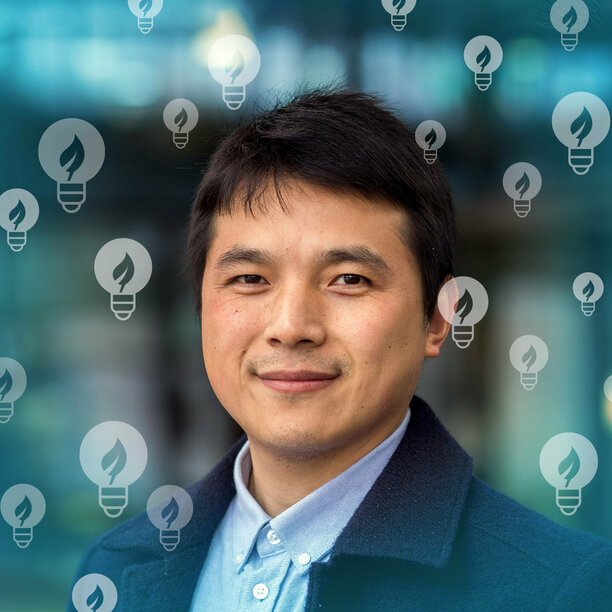Empowering the energy transition
After having obtained his Bachelor, Master and PhD degrees in Electrical Engineering from Nanjing University of Aeronautics and Astronautics in China, Dongsheng Yang joined the Department of Energy Technology at Aalborg University in Denmark 2016. ‘Denmark plays a leading role in renewable energy research, and tenure tracks there can be rather short,’ Yang explains. ‘In case you perform excellent, it is possible to become a full professor only five years after obtaining your PhD.’ Yang was well underway, being promoted to Assistant Professor in 2018, when his wife got appointed at Philips in the Netherlands. ‘To rejoin with my family, I decided to look for job openings here. So when I saw a vacancy for an Assistant Professor in medium voltage power electronics at TU/e, I decided to apply.’
To his great pleasure he got the job, and as of September 2019, Yang has been working at the Department of Electrical Engineering. ‘I thoroughly enjoy working here. Our group treats every member as if they were family. And independent research is very important here. Sure, you need to obtain your own funding, but if you succeed, you have the great privilege of doing what you love.’
Make a difference
Yang’s expertise is in the modeling, analysis, control, and design of power electronics-dominated power systems, aiming to safely accommodate the high-penetrations of renewable energy sources as well as energy-efficient end-uses. ‘Our research team typically works at the higher technology readiness levels, meaning that the results of our work can be put into use in a rather short time frame. The idea that my research can truly make a difference for people’s lives really motivates me.’
As far as the challenges Yang’s projects address go, the clock is ticking, he says. ‘During my PhD some ten years ago, I was looking at the integration of renewable energy into the grid. We developed some worst case scenario’s that looked rather far-fetched back then. But now we’ve already reached that point! We have seen places where forty to seventy percent of the energy flowing into the grid is generated by intermittent sources like sun and wind. This leads to massive challenges in terms of aligning supply and demand and protecting the grid against power failures as a result of peak loads.’
Power to hydrogen
Yang’s current research is directed toward two major topics. The first is power to hydrogen. ‘This is related to using hydrogen as an energy carrier. The idea of our recently awarded FlexH2 project is to develop a system that converts power generated by far off-shore wind energy farms into hydrogen. With current coal-fired or hydroelectric power plants we are able to tune the energy generation to the load. But with wind and solar energy you depend upon volatile generation mechanisms. To keep the electricity grid stable we want to store any surplus of generated energy in hydrogen produced from water by electrolysis.’ One of the challenges there is to transport energy from the place where it is generated toward the hydrogen electrolyser, Yang explains. ‘We are dealing with large powers, in ten to twenty gigaWatt installations. In terms of electronics, you have to consider where to use alternating currents (AC) and where direct current (DC) would be better. For near-shore applications, AC technology is much more mature. For longer distances, from a risk perspective, it would be wiser to use DC technology. However, the power electronics equipment you need for that would be ten times heavier than an AC alternative. If you need to install all of that equipment far offshore, it is simply too expensive and that’s where more innovations are needed to make breakthroughs.’
Energy to go
Besides on the power generation side, Yang also works on the demand end of the puzzle. ‘In a project called E2Go, I am part of a strong consortium which aims to bring down the costs for fast-charging of electric vehicles.’ At the moment it will take you hours to fully charge an electric car. And the fast-charging facilities that have been made available from companies like Tesla are not developed in such a way that the grid will be able to cope with the peak loads when you simply install more of those. That is why Yang is looking into new architectures. Current fast-charging stations demand high powers and high currents to be supplied by the grid in short times. By introducing local buffers this peak can be turned into a lower, more stable demand from the grid. These buffers can charge at lower voltages and currents and convert them into the high power required for fast charging.
Yang is clear about the way forward when asked about his vision on the energy transition. ‘We need multi-energy carrier solutions to help us decarbonize. However, our current grid infrastructure is unable to accommodate those. Multidisciplinary collaborations between academia and industry are key to solving this immense problem.’

